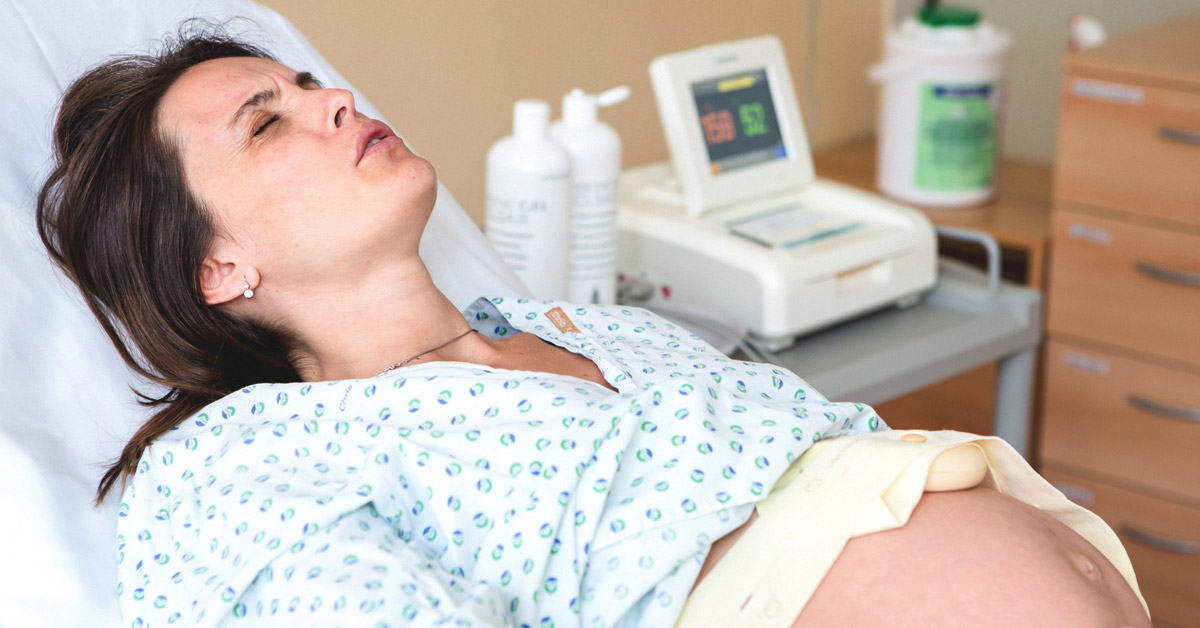Although labor and delivery usually proceed smoothly, unanticipated problems sometimes develop. Hospitals are well equipped to deal with these complications. It is important to be aware of the warning signs of possible complications so you can alert your doctor immediately any problems.
Premature Rupture of Membranes
For most women, if the amniotic membranes rupture (“the water breaks”) early, labor follows within a few hours. But the earlier in pregnancy this rupture occurs, the longer it may take for labor to begin the longer it may take for labor to begin afterward.
Premature rupture of membranes (PROM) is an event that occurs during pregnancy when the sac containing the developing baby (fetus) and the amniotic fluid bursts or develops a hole prior to the start of labor.
Conditions that most often cause the premature rupture of membranes include
Infection of the uterus or cervix– Maternal infection is probably the most common risk of PROM. Ironically, this complication is the one most likely to be caused by the doctor and hospital environment. At all gestational ages, patients who have had only a sterile speculum exam have an average of 11.3 days of latency; whereas those who have had digital vaginal exams only last 2.1 days before labor starts. Obviously, the risk to the premature fetus is lessened with each day it can remain in the womb, making digital exams a definite risk to the baby.

Multiple births– (twins, triplets, etc)
Incompetent cervix – Normally, the cervix remains closed throughout pregnancy until labor begins. An incompetent cervix gradually opens due to the pressure from the developing fetus after about the 13th week of pregnancy. The cervix begins to thin out and widen without any contractions or labor. The membranes surrounding the fetus bulge down into the opening of the cervix until they break, resulting in the loss of the baby or a very premature delivery, or
Premature separation of the placenta (placental abruption)-Placental abruption is the early separation of a normal placenta from the wall of the uterus. The placenta is an organ that grows in the uterus during pregnancy to provide nourishment and oxygen to the baby…
Excess amniotic fluid (polyhydramnios)
Smoking is also a risk factor – Studies have also found the risk of PROM increased with the number of cigarettes the mother smoked, regardless of alcohol and caffeine intake.
Certain procedures carry an increased risk of PROM, including amniocentesis and cervical cerclage
If your membranes rupture, you are likely to feel a gush or trickle of fluid out of your vagina. (Sometimes, a woman thinks her membranes have broken when, in fact, urine has been pushed out by the weight of the baby on her bladder.) Your doctor can tell in a pelvic examination if your membranes have ruptured and if your cervix has started to thin (efface) or open (dilate). He or she may also take samples of amniotic fluid to evaluate the maturity of the baby’s lungs and to check for infection.
| Specific treatment for PROM will be determined by your physician based on:Your pregnancy, overall health, and medical historyExtent of the conditionYour tolerance for specific medications, procedures, or therapiesExpectations for the course of the conditionYour opinion or preference |
Treatment for premature rupture of membranes may include:
- Hospitalization
- Expectant management
- Monitoring for signs of infection such as fever, pain, increased fetal heart rate, and/or laboratory tests
- Giving the mother medications called corticosteroids that may help mature the lungs of the fetus. However, corticosteroids may mask an infection in the uterus.
- Antibiotics
- Tocolytics – medications used to stop preterm labor.
- Delivery
If the membranes rupture after the 36th week of pregnancy, labor usually begins in 24 to 48 hours. If it does not, labor will probably be induced. The risk of infection begins to increase 24 hours after the membranes rupture. Because of the risk of infection, you should not have intercourse or put anything into your vagina, including tampons.
Although rate, the membranes can rupture before the 25th week of pregnancy. When the membranes rupture this early in pregnancy, a doctor will try to delay the onset of labor for as long as it is safe for the baby. The woman is usually admitted to the hospital so that her temperature and the baby’s heart rate can be monitored continuously; an increase in either may be an indication that an infection is developing inside the uterus. Exposure to infection inside the uterus can significantly reduce a baby’s chances of survival.
Only the fourth of babies born before the 25th week of pregnancy survive outside the uterus. Because they are not fully developed at birth, those that do survive may have permanent disabilities, including slow development, mental retardation, inadequate development of their lungs, or blindness.
Prevention of premature rupture of membranes:
Unfortunately, there is no way to actively prevent PROM. However, this condition does have a strong link with cigarette smoking and mothers should stop smoking as soon as possible.